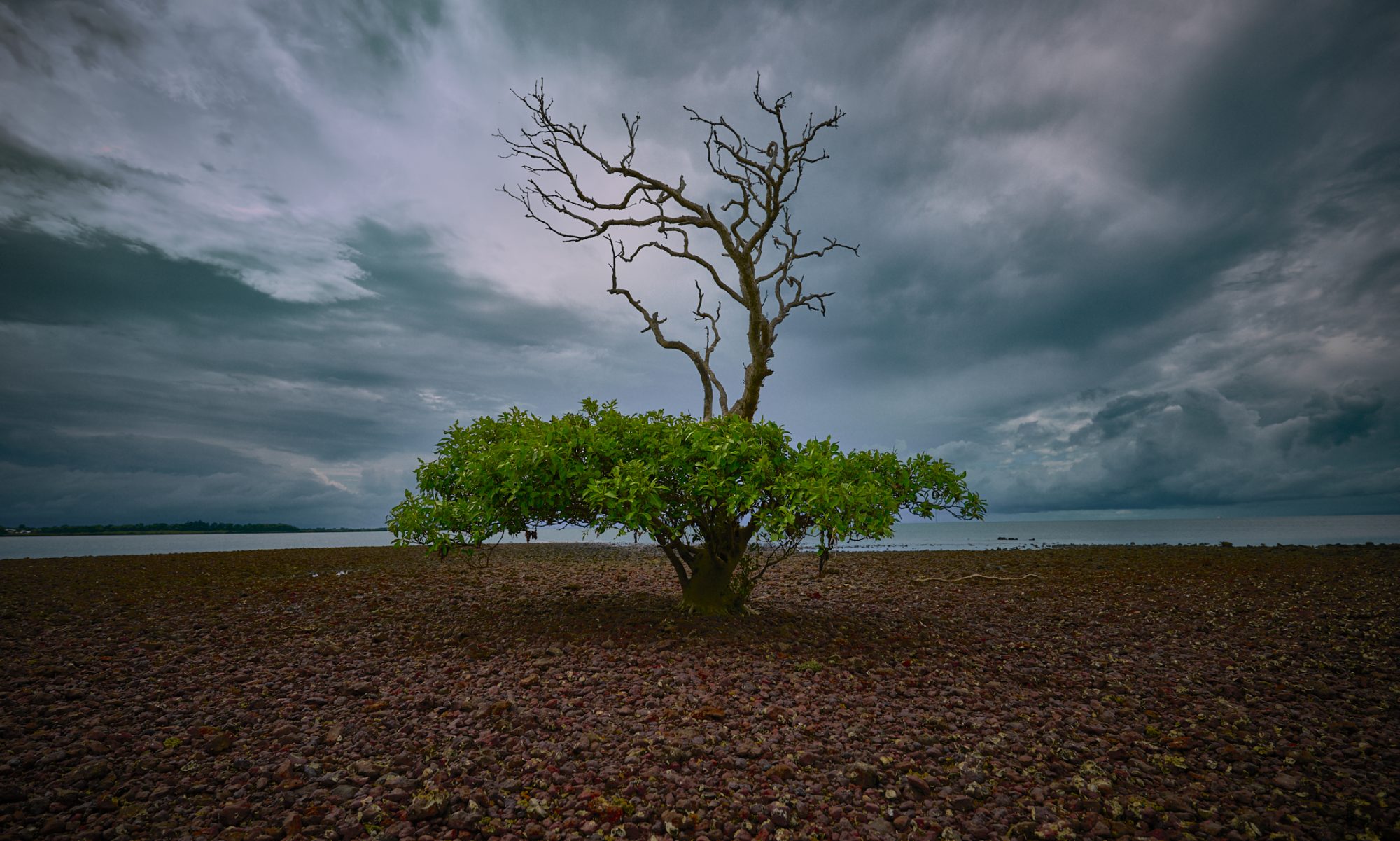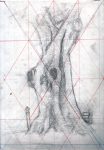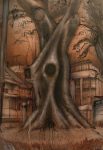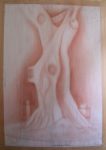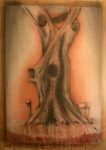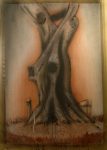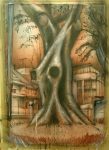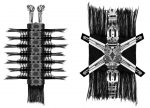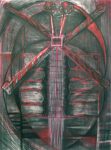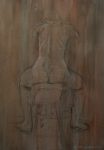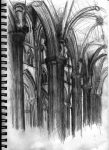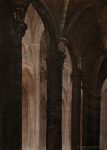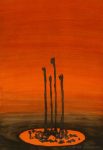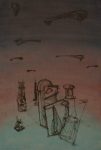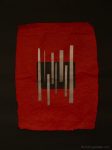 Believe it or not, this is a still life sketch. The brief for this piece was to completely cover a large sheet of paper in very small marks to create a background texture field. I went and scrawled over the whole thing in a faux asian syle script, which wasn’t strictly the idea, but hey, I liked doing it.
Believe it or not, this is a still life sketch. The brief for this piece was to completely cover a large sheet of paper in very small marks to create a background texture field. I went and scrawled over the whole thing in a faux asian syle script, which wasn’t strictly the idea, but hey, I liked doing it.
From there we were drawing a selection of pacific islander art, statues etc, but just taking a narrow angle section of the arrangement. It was all going ok, but while the left side was working out really well, the middle to right was a bit empty and meh. The teacher suggested covering it, and so with giddy abandon, I obliterated a huge amount of work with that big black rectangle. The theory behind this, as far as I can see, is that the remaining areas are made all the more precious by the wanton destruction of the work in the covered section.
